A monumental Oxford house extension makes the most of concrete’s structural strength
A traditional Oxford house gets a concrete, part-shelter, part-sculpture, brutalist gazebo by Adrian James Architects
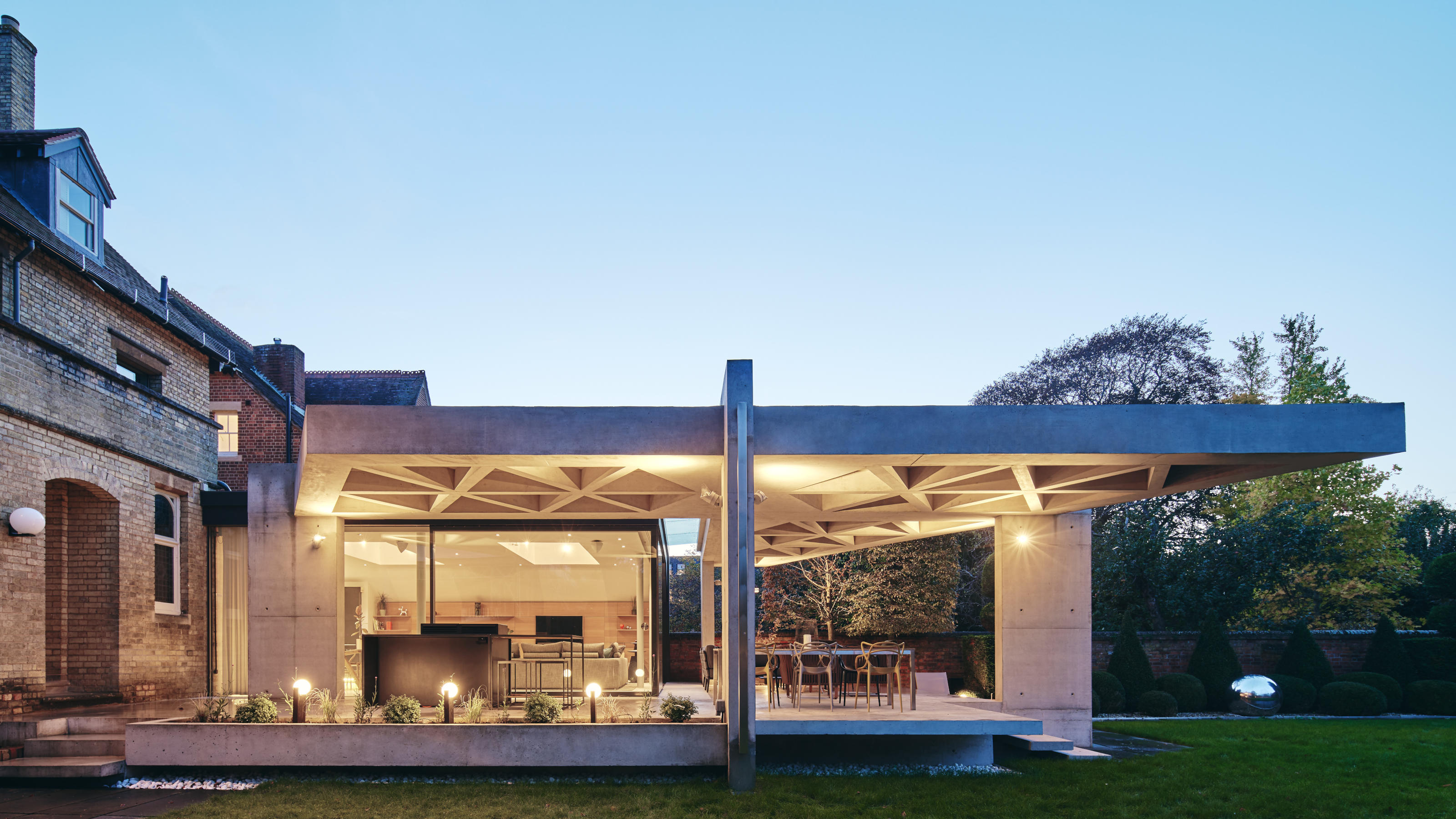
Although this new Oxford house extension is relatively small, it makes a substantial impact. Crafted from concrete, drawing inspiration from some of the most celebrated modernist architecture structures of the 20th century, Adrian James Architects has created what it calls a ‘gazebo with a difference’.
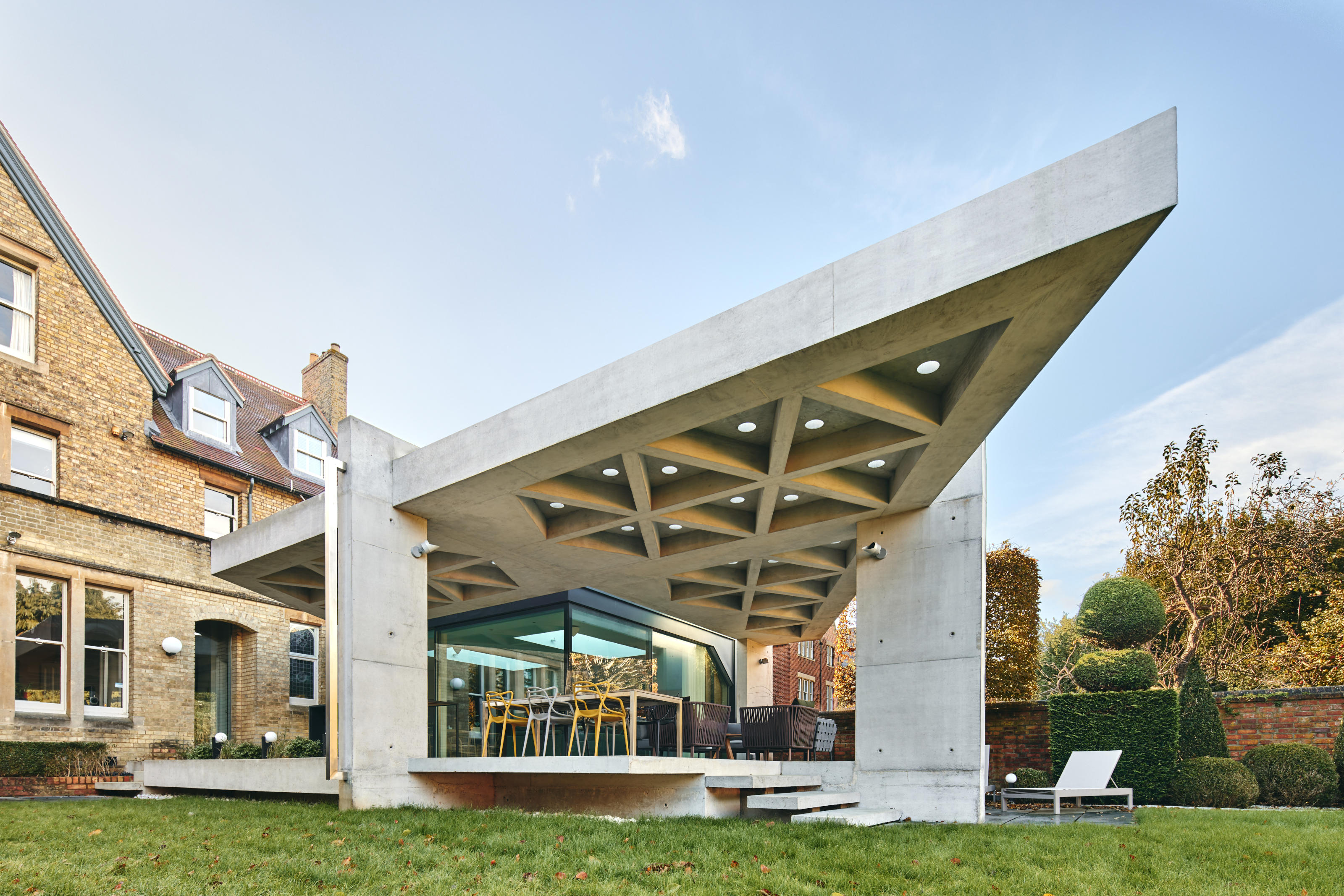
An Oxford house’s ‘concrete gazebo’
The new extension is shaped like a triangular wedge that extends out into the garden at the rear of an existing period house. Concrete is the dominant material, forming the floor slab, steps, columns and roof.
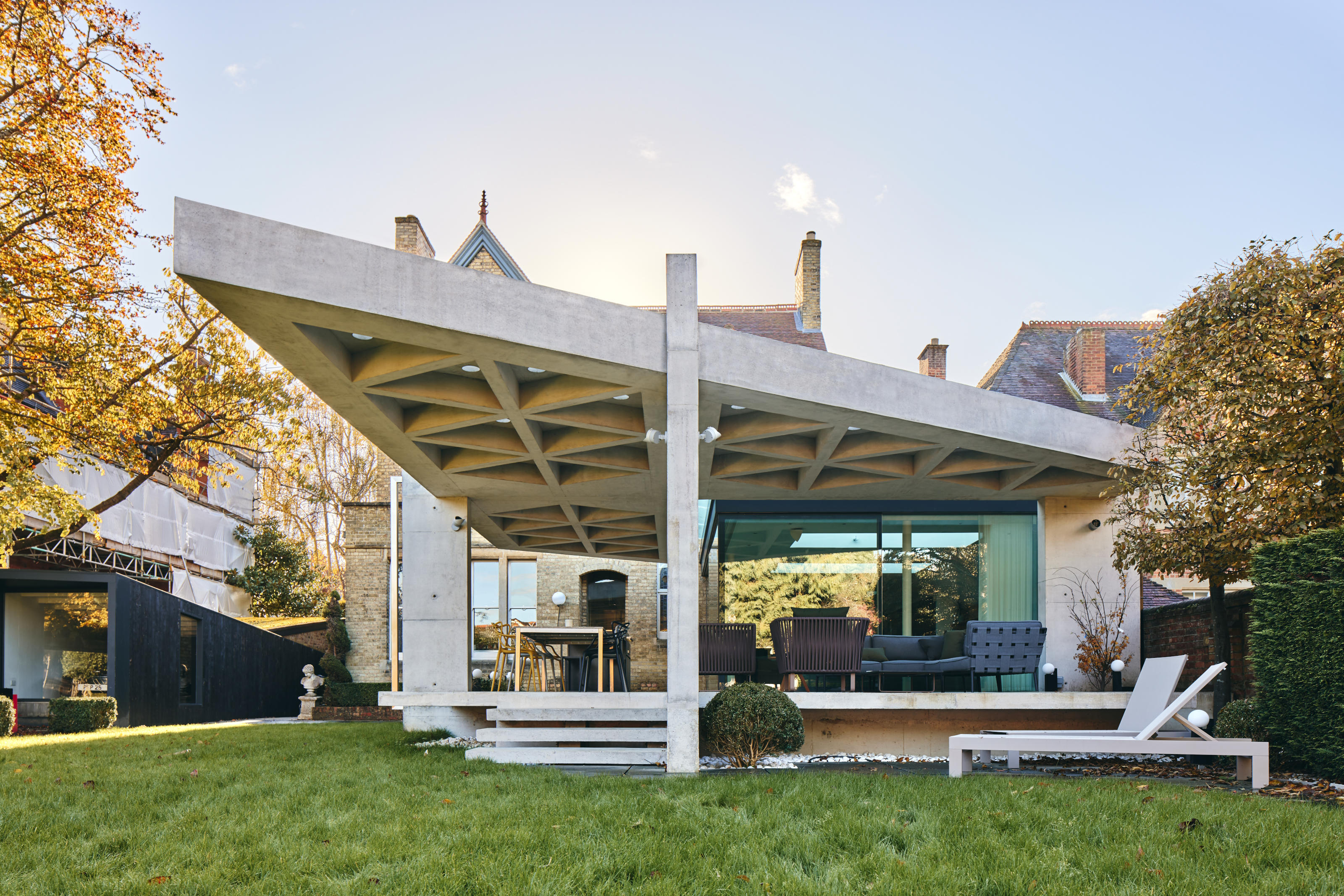
The latter cantilevers out across a new terrace, providing a covered space that wraps around a glazed living room extension. A response to the client’s request for a strong statement made from concrete, the architects have certainly delivered.
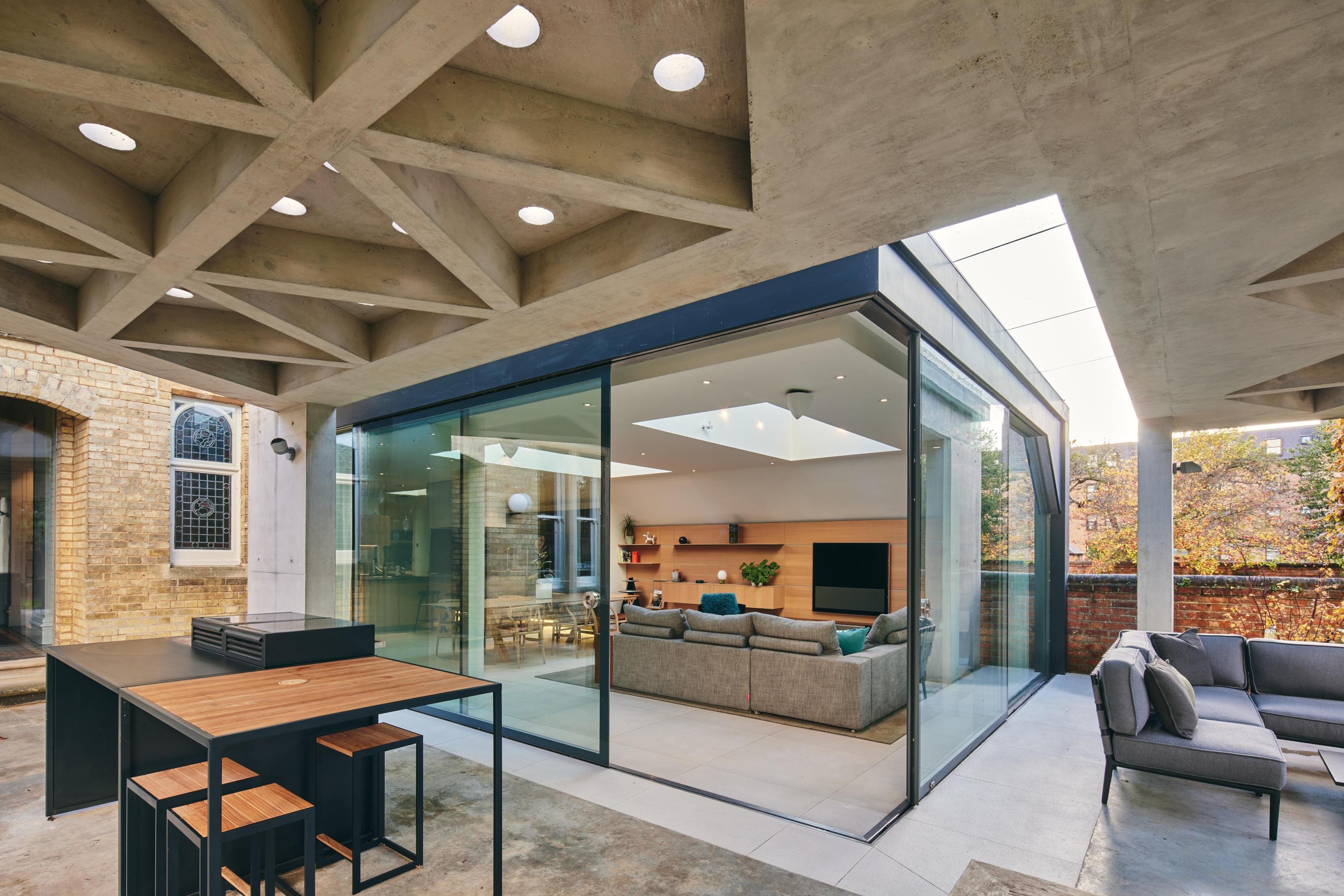
One of the key inspirations was John Lautner’s iconic Sheats Goldstein house in Los Angeles, and the underside of the new roof structure features inset triangular elements and circular pavement set into the concrete.
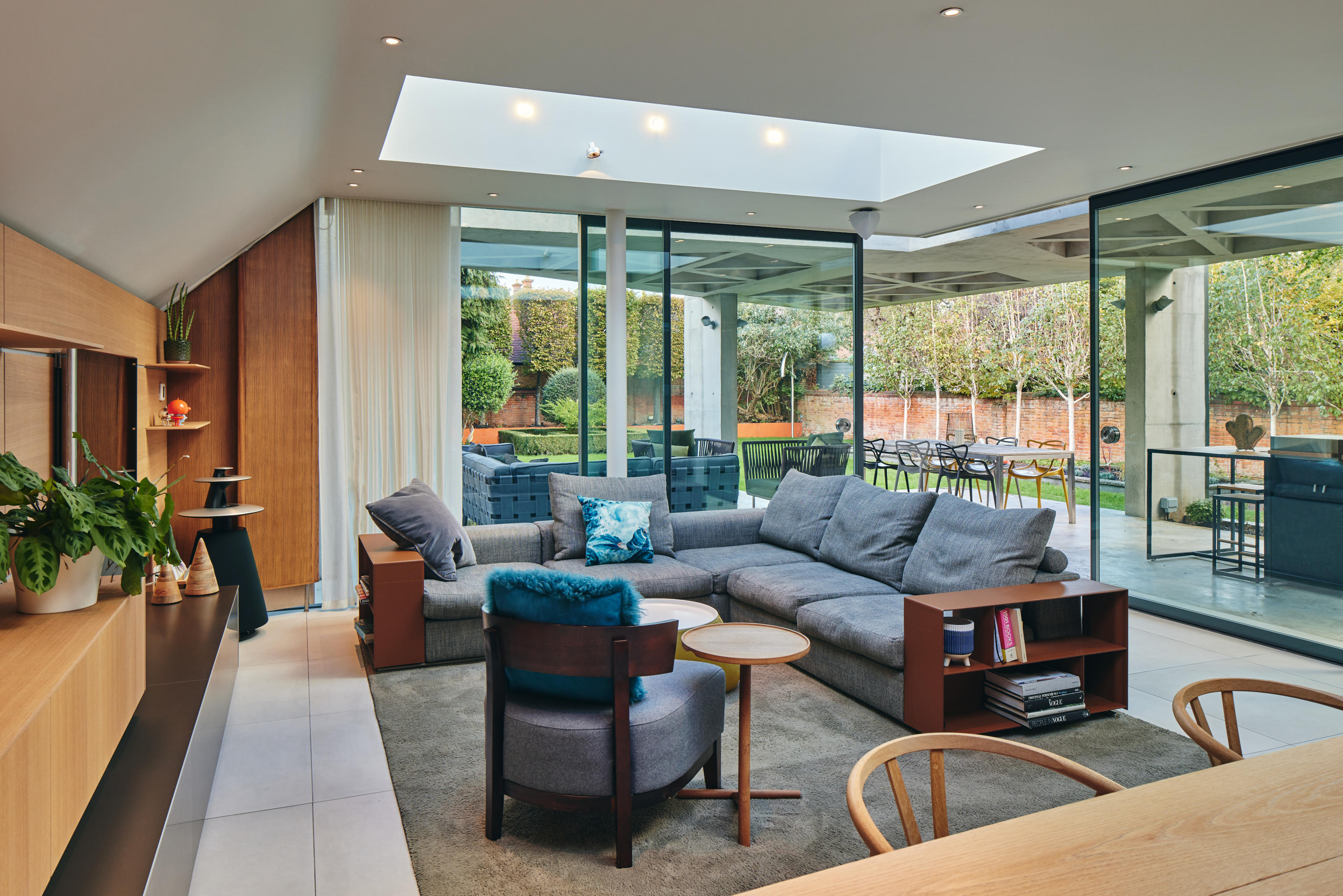
‘The brief for this project was simple: to provide shelter,’ the architects write. ‘Our client wanted a covered terrace in the garden so they could spend more time outdoors, day or night, rain or shine.
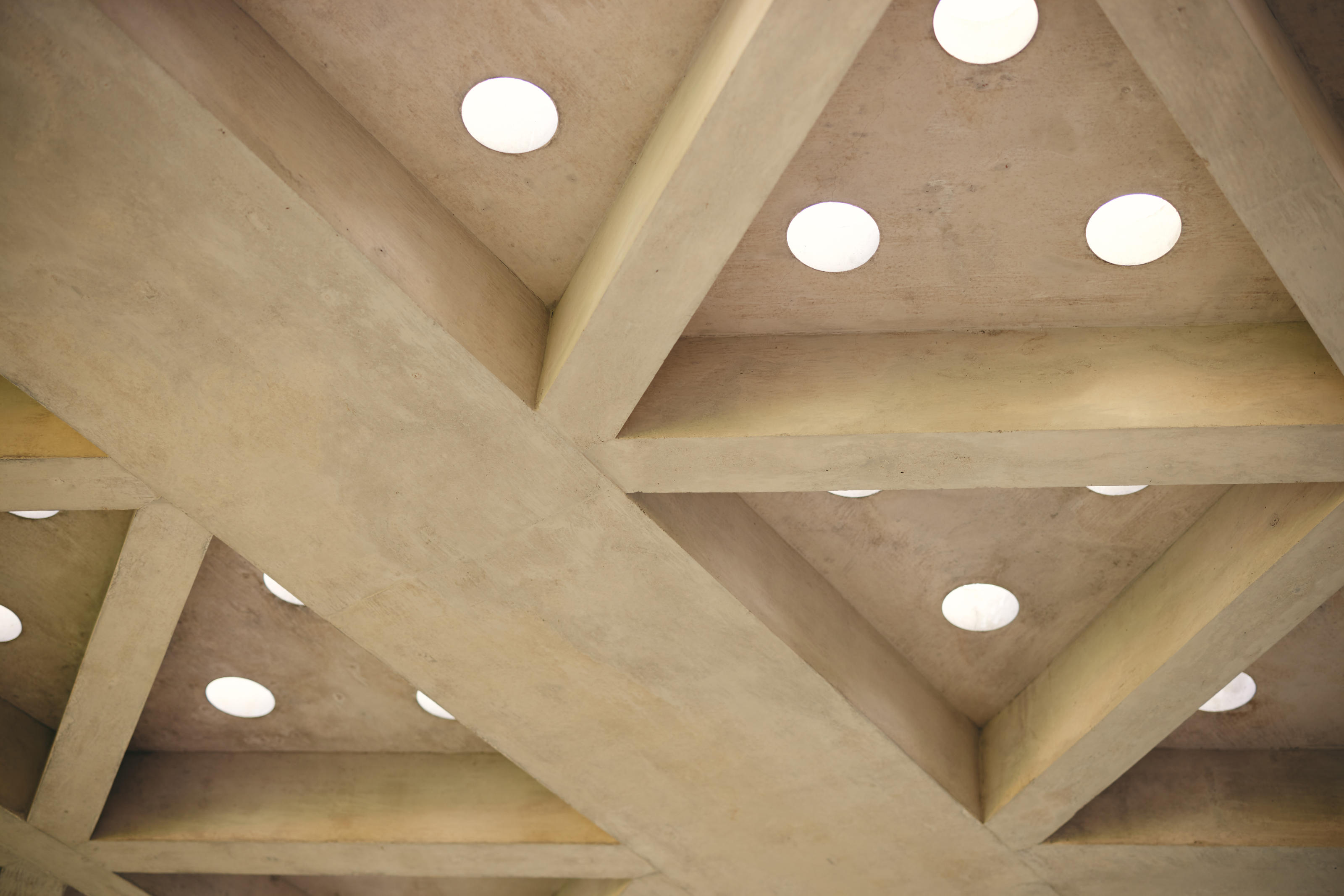
Beyond its pragmatic function the client also wanted something of higher architectural purpose. Supported on just four columns, the massive roof structure pulls off that rare trick of appearing far lighter than it actually is.

The flipside to this sculptural boldness and ‘structural gymnastics’ is concrete’s massive carbon footprint. ‘We were clear from the start that if we were going to use concrete we would need to compensate for it by properly and fully offsetting,’ the architects explain. ‘We researched the most effective and assured way to do this and the client has financed the requisite amount of new woodland planting in Yorkshire.’
Receive our daily digest of inspiration, escapism and design stories from around the world direct to your inbox.
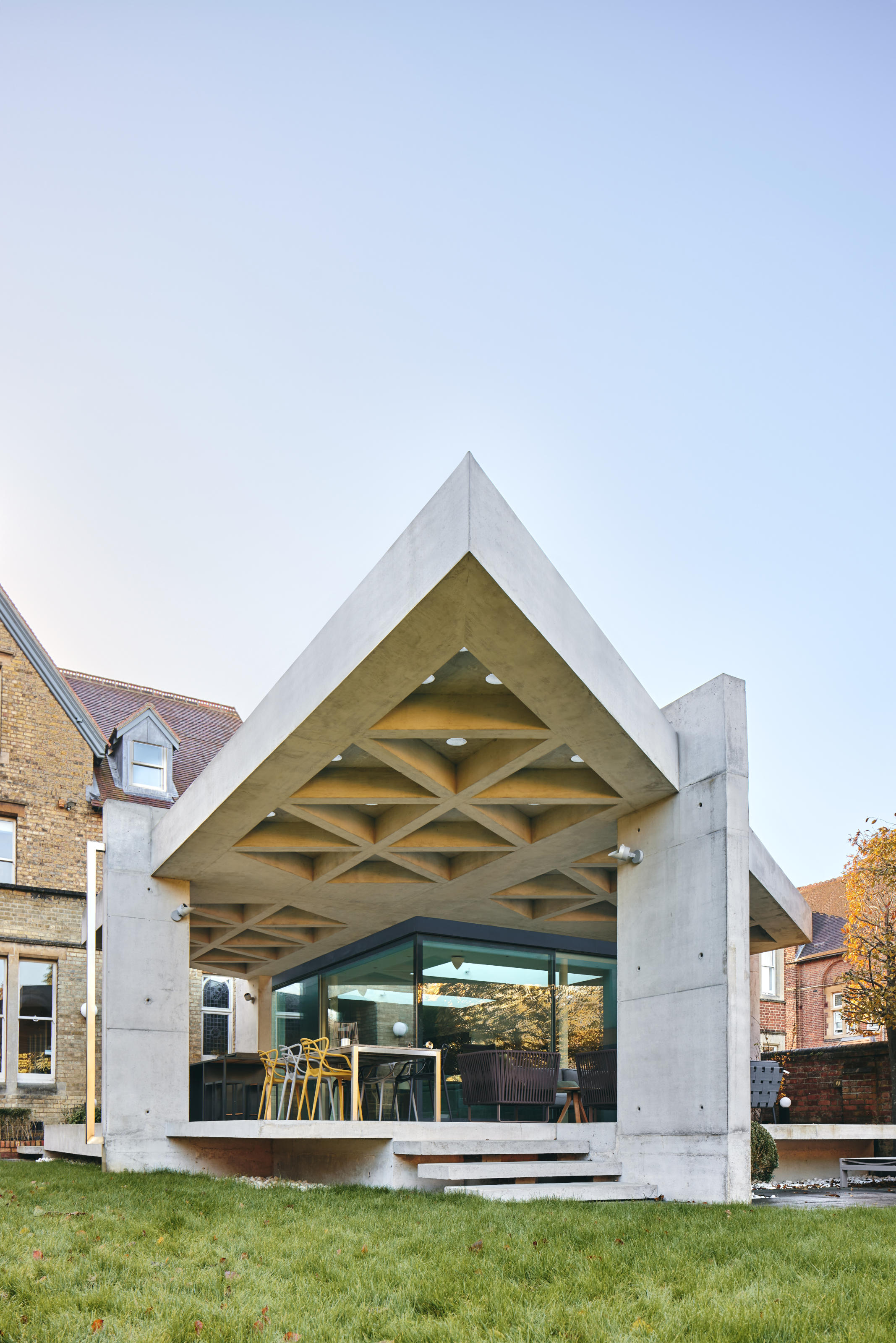
Jonathan Bell has written for Wallpaper* magazine since 1999, covering everything from architecture and transport design to books, tech and graphic design. He is now the magazine’s Transport and Technology Editor. Jonathan has written and edited 15 books, including Concept Car Design, 21st Century House, and The New Modern House. He is also the host of Wallpaper’s first podcast.
-
 Robert Therrien's largest-ever museum show in Los Angeles is enduringly appealing
Robert Therrien's largest-ever museum show in Los Angeles is enduringly appealing'This is a Story' at The Broad unites 120 of Robert Therrien's sculptures, paintings and works on paper
-
 The Wallpaper* style team recall their personal style moments of 2025
The Wallpaper* style team recall their personal style moments of 2025In a landmark year for fashion, the Wallpaper* style editors found joy in the new – from Matthieu Blazy’s Chanel debut to a clean slate at Jil Sander
-
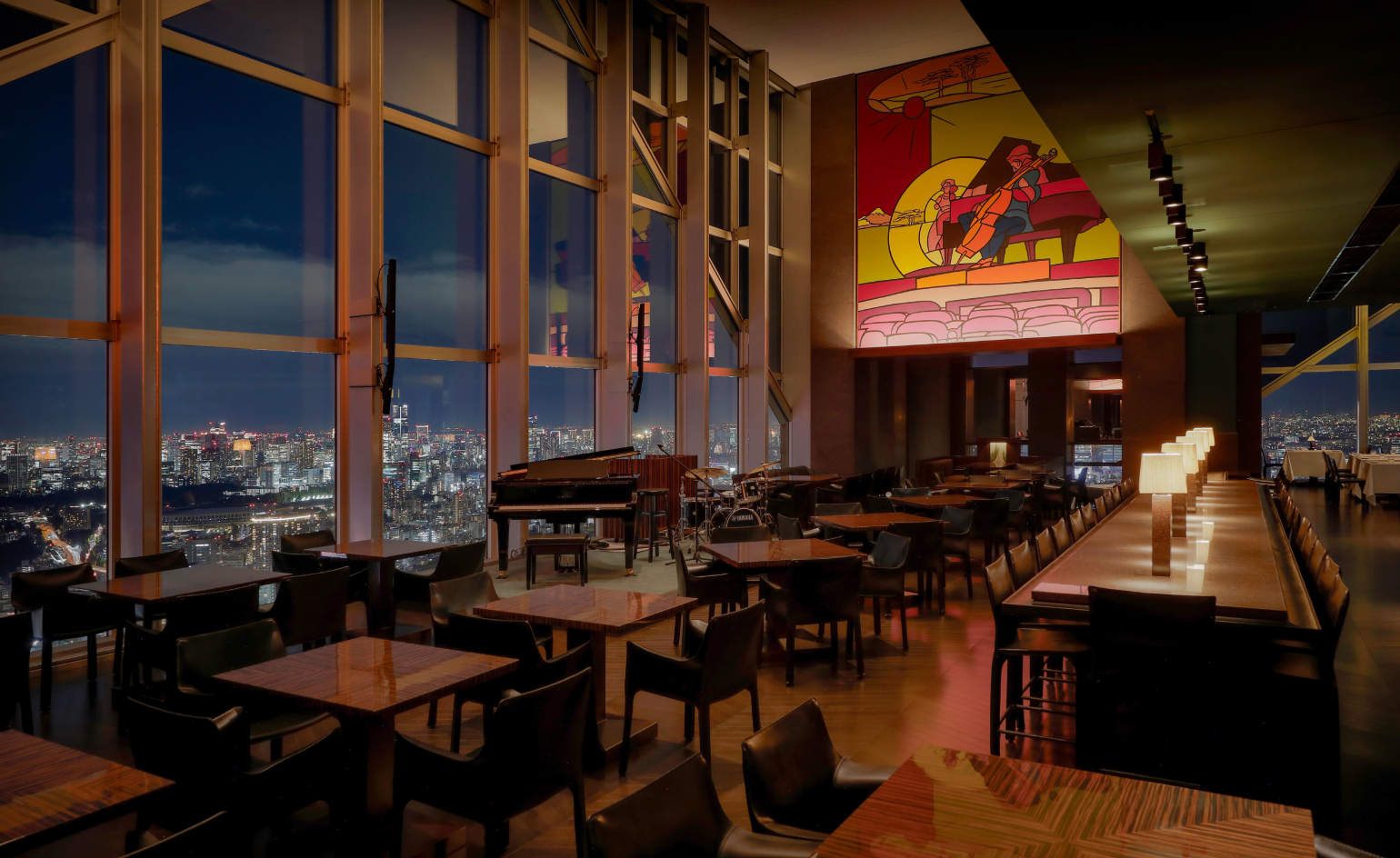 Tokyo’s most cinematic stay reopens as an exercise in architectural self-control
Tokyo’s most cinematic stay reopens as an exercise in architectural self-controlPark Hyatt Tokyo and Studio Jouin Manku demonstrate how design can evolve without erasing memory, balancing modernist heritage with contemporary comfort
-
 Arbour House is a north London home that lies low but punches high
Arbour House is a north London home that lies low but punches highArbour House by Andrei Saltykov is a low-lying Crouch End home with a striking roof structure that sets it apart
-
 A former agricultural building is transformed into a minimal rural home by Bindloss Dawes
A former agricultural building is transformed into a minimal rural home by Bindloss DawesZero-carbon design meets adaptive re-use in the Tractor Shed, a stripped-back house in a country village by Somerset architects Bindloss Dawes
-
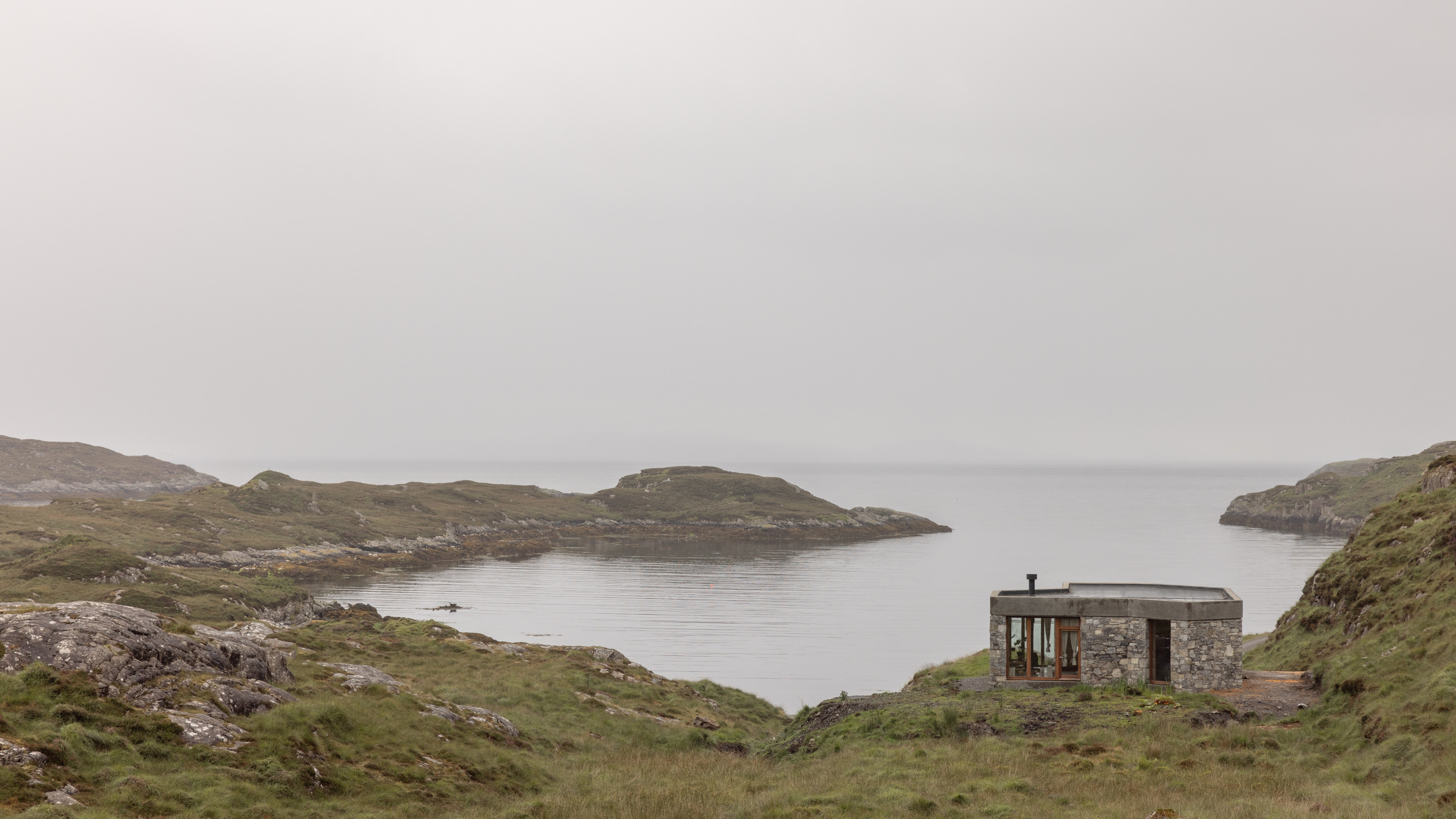 RIBA House of the Year 2025 is a ‘rare mixture of sensitivity and boldness’
RIBA House of the Year 2025 is a ‘rare mixture of sensitivity and boldness’Topping the list of seven shortlisted homes, Izat Arundell’s Hebridean self-build – named Caochan na Creige – is announced as the RIBA House of the Year 2025
-
 In addition to brutalist buildings, Alison Smithson designed some of the most creative Christmas cards we've seen
In addition to brutalist buildings, Alison Smithson designed some of the most creative Christmas cards we've seenThe architect’s collection of season’s greetings is on show at the Roca London Gallery, just in time for the holidays
-
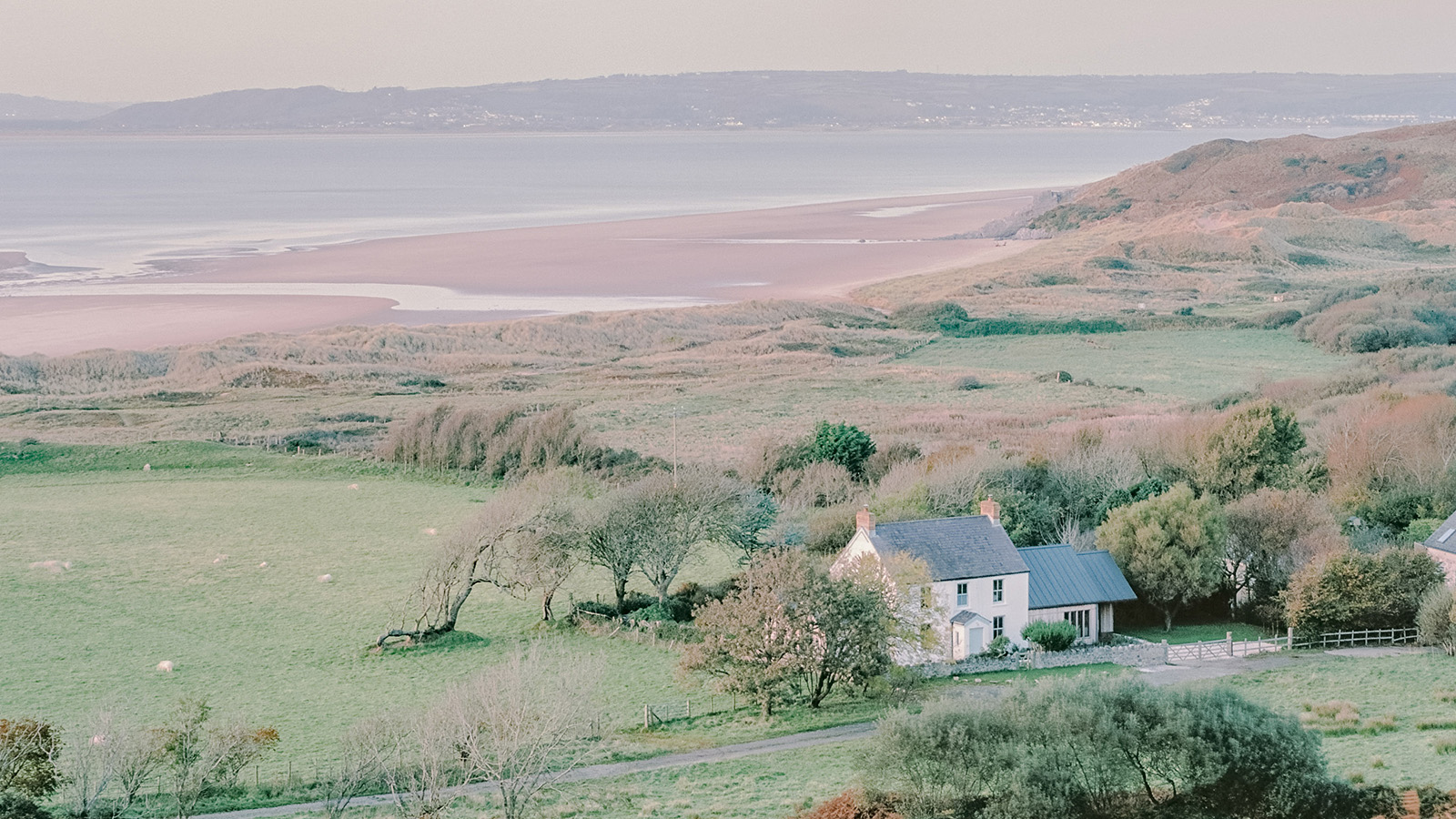 In South Wales, a remote coastal farmhouse flaunts its modern revamp, primed for hosting
In South Wales, a remote coastal farmhouse flaunts its modern revamp, primed for hostingA farmhouse perched on the Gower Peninsula, Delfyd Farm reveals its ground-floor refresh by architecture studio Rural Office, which created a cosy home with breathtaking views
-
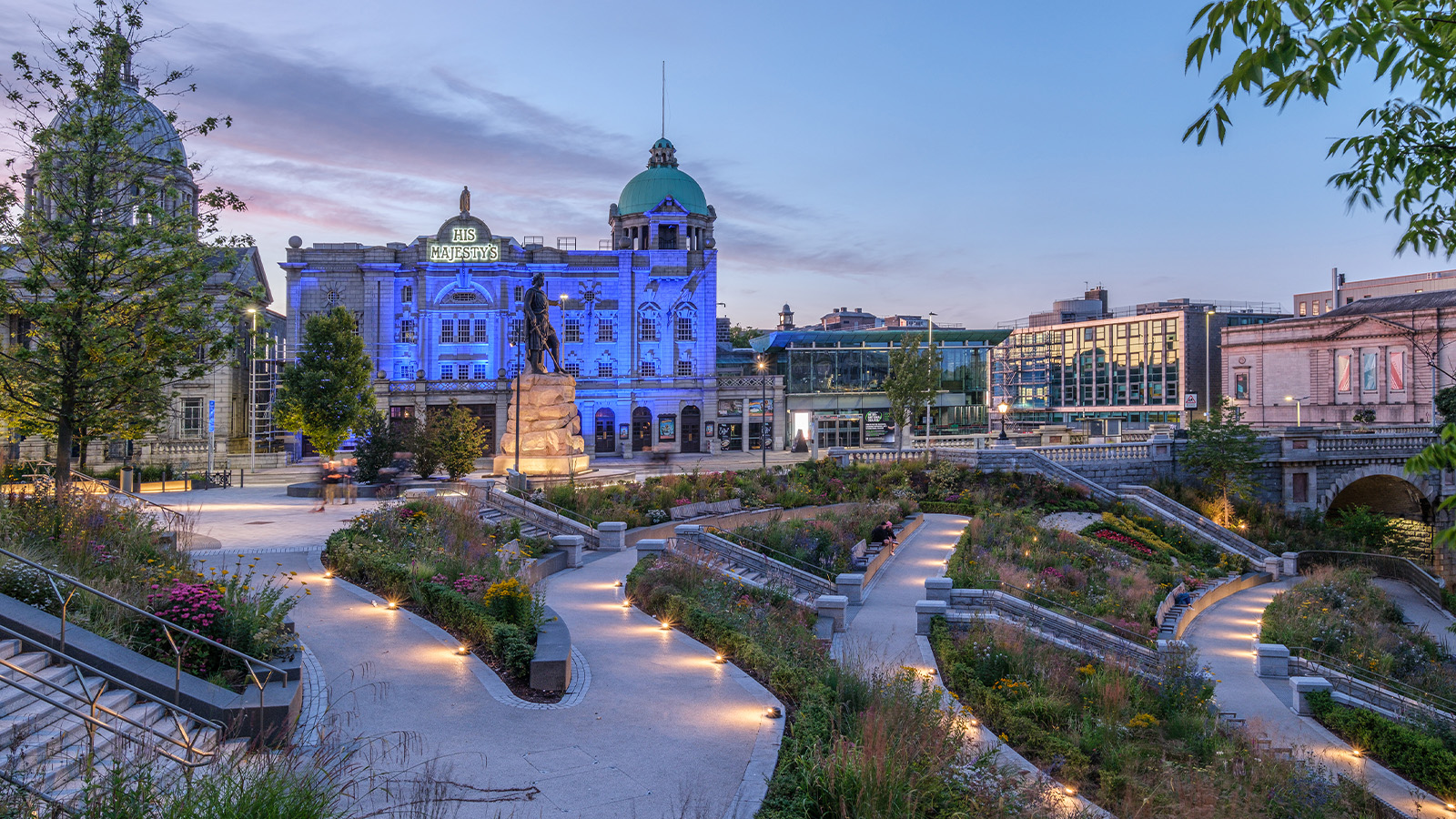 A revived public space in Aberdeen is named Scotland’s building of the year
A revived public space in Aberdeen is named Scotland’s building of the yearAberdeen's Union Terrace Gardens by Stallan-Brand Architecture + Design and LDA Design wins the 2025 Andrew Doolan Best Building in Scotland Award
-
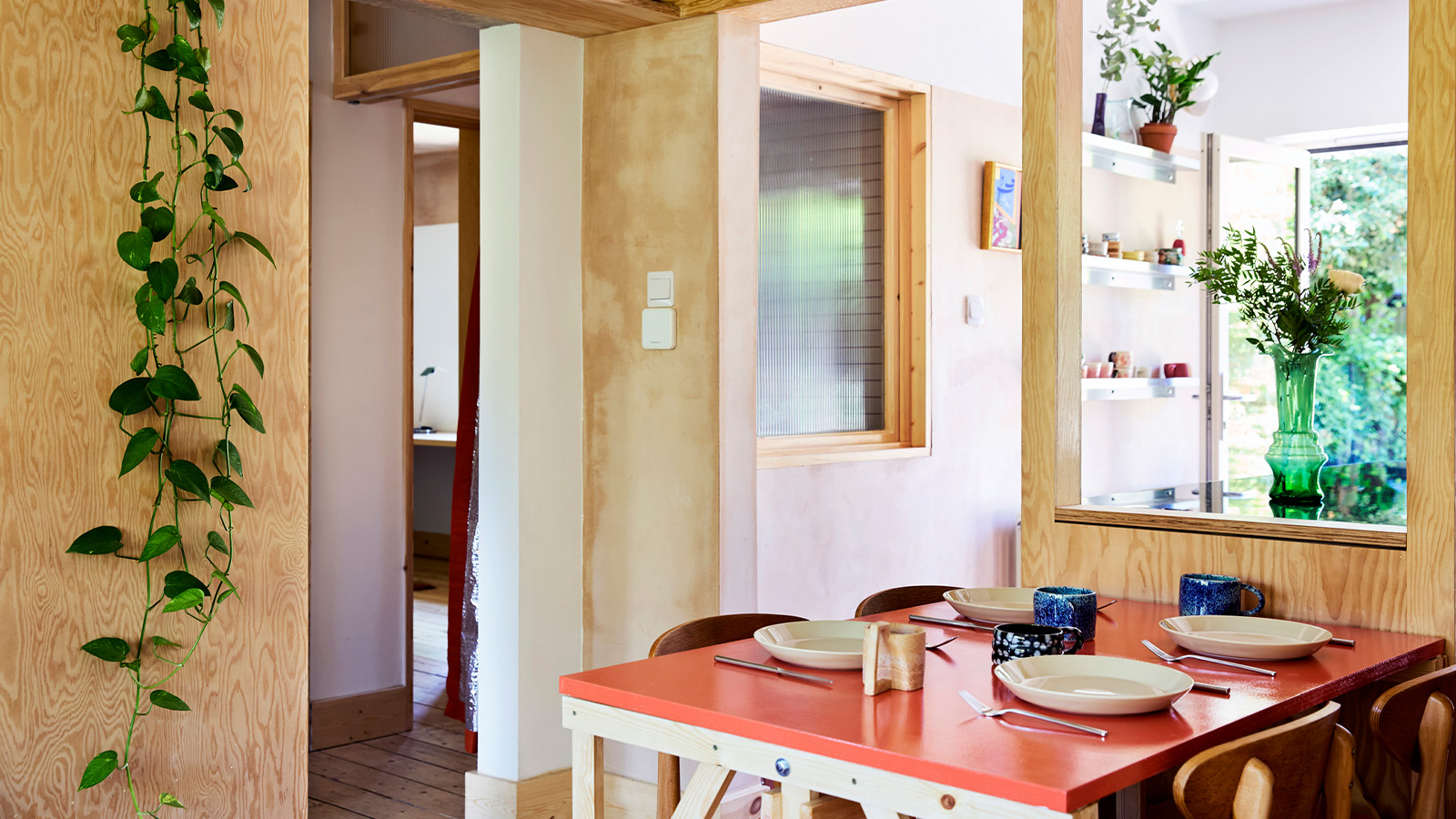 A refreshed 1950s apartment in East London allows for moments of discovery
A refreshed 1950s apartment in East London allows for moments of discoveryWith this 1950s apartment redesign, London-based architects Studio Naama wanted to create a residence which reflects the fun and individual nature of the clients
-
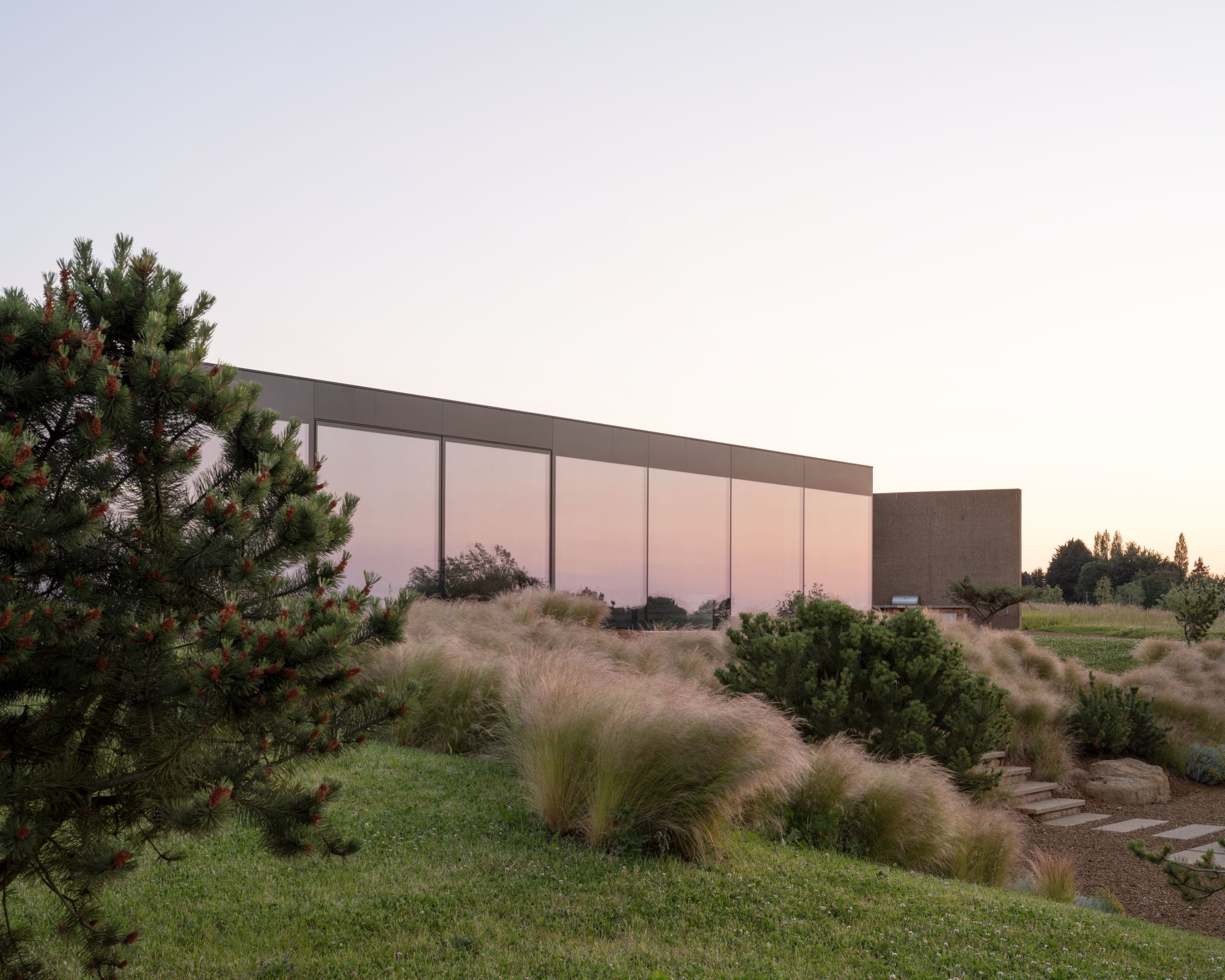 In this Cotswolds home, drama meets minimalism
In this Cotswolds home, drama meets minimalismCotswolds home Hiaven house, with interiors designed by McLaren Excell, is a perfect blend of contemporary chic and calm, countryside drama